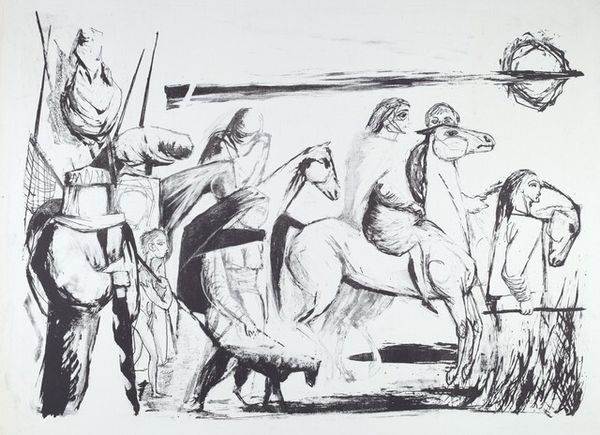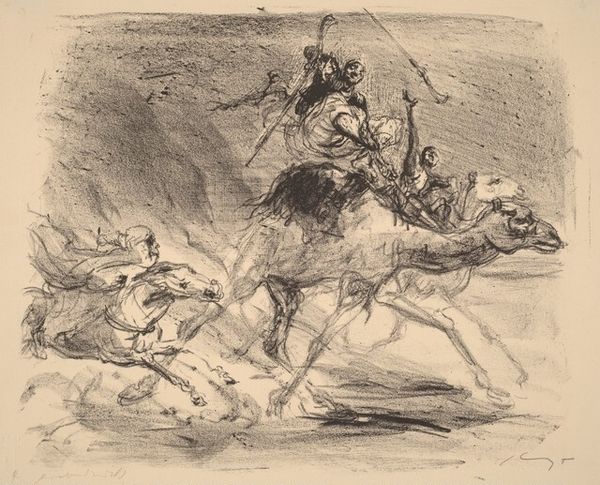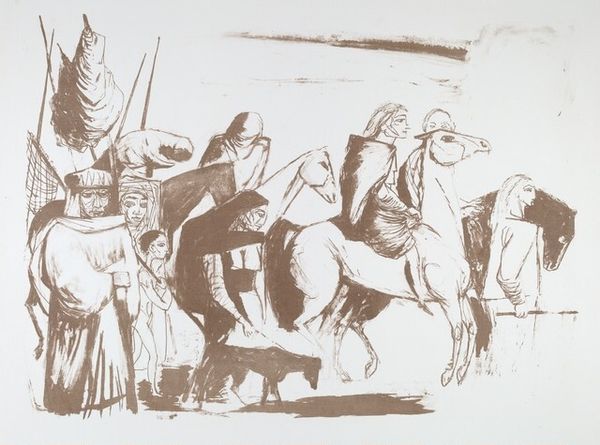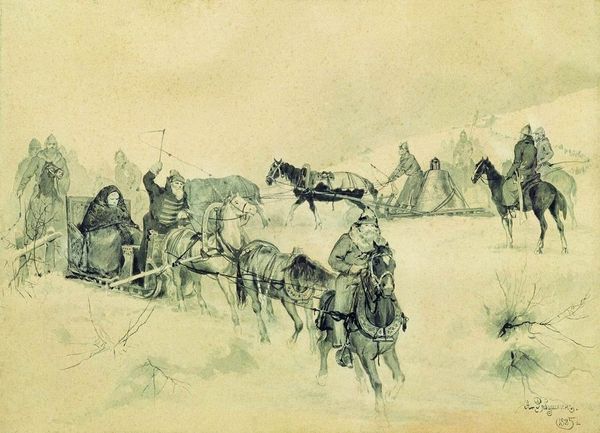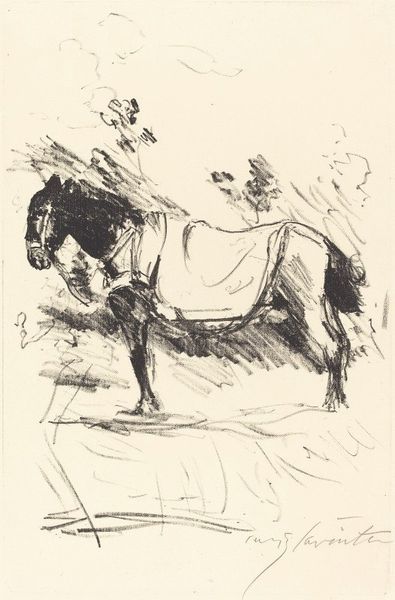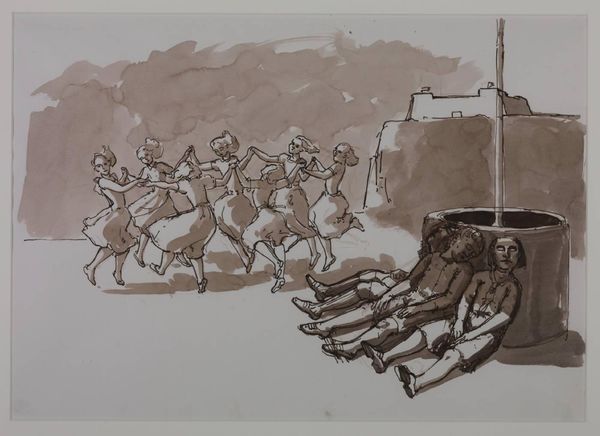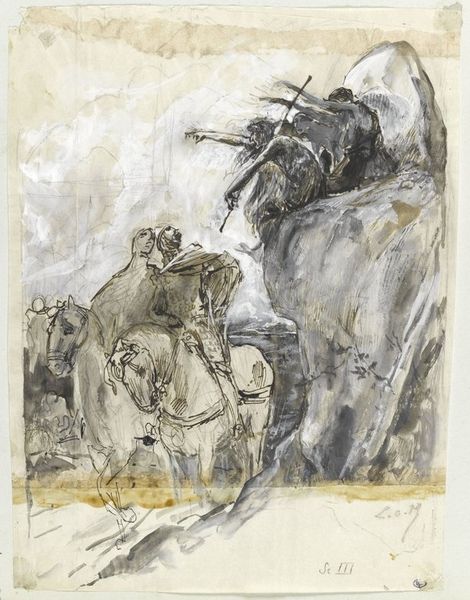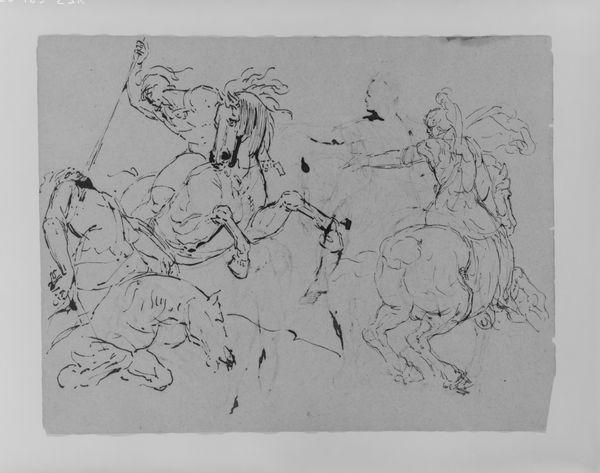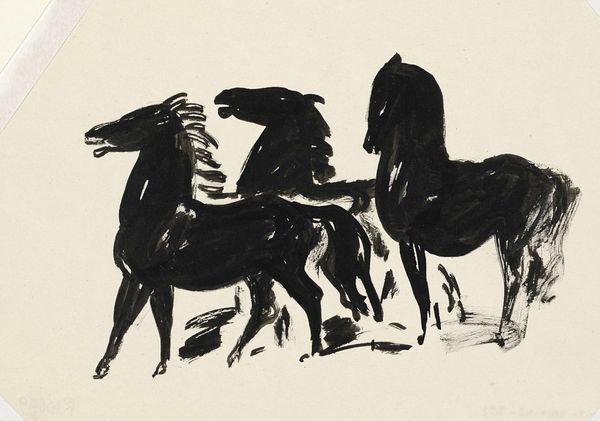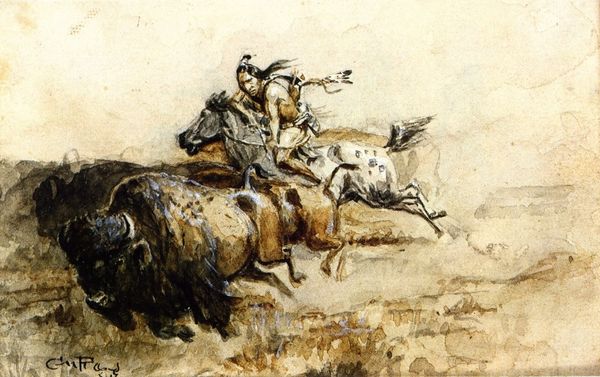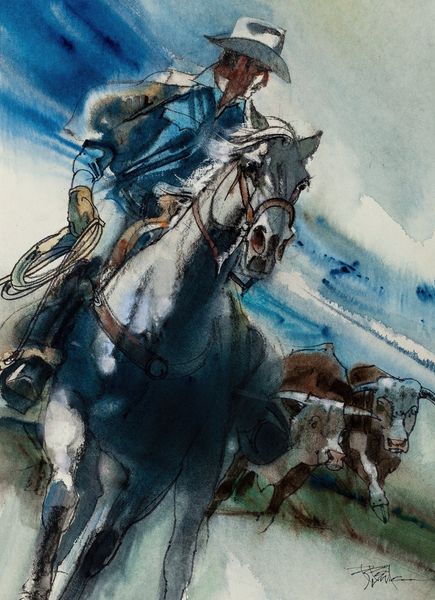
Dimensions: support: 480 x 623 mm frame: 928 x 792 x 32 mm
Copyright: © Succession Picasso/DACS 2014 | CC-BY-NC-ND 4.0 DEED, Photo: Tate
Curator: This is Picasso’s 'Bullfight Scene,' currently residing here at the Tate. The piece appears to be swiftly rendered, perhaps an ink wash. Editor: It feels primal. Raw energy distilled into blacks and whites. You can almost hear the roar of the crowd and the snorting of the bull. Curator: Consider that the bullfight served as a recurring motif in Picasso's oeuvre, often interpreted as a symbolic representation of the struggle between life and death, or even a stand-in for political turmoil in Spain. The process of its making--the rapid application, the monochrome palette--only amplifies the inherent drama. Editor: Indeed, the simplification lends it a universality. The absence of colour removes it from the specifics of any given event, making it an enduring symbol of conflict. It speaks to the politics of spectacle and violence inherent in the tradition of bullfighting. Curator: The paper itself takes on importance. Its texture, its absorbency, its role as the very foundation of the image’s existence. We must appreciate the dialogue between the artist's hand, the ink, and the material support. Editor: It's a stark reminder of the complex relationship between art, culture, and power. Fascinating.
Comments
tate 8 months ago
⋮
http://www.tate.org.uk/art/artworks/picasso-bullfight-scene-t06803
Join the conversation
Join millions of artists and users on Artera today and experience the ultimate creative platform.
tate 8 months ago
⋮
Bullfight Scene is a brush and ink drawing on paper made by Picasso in the château of Vauvenargues, near Aix-en-Provence, where he and his partner Jacqueline Roque had moved in 1958. Executed on 25 February 1960, this is number ten of fourteen drawings on the theme of the bullfight that Picasso made on the same day. Thirteen of these are ink wash drawings while one (number thirteen) was made in pastel, India ink and wash; Picasso dated, numbered and signed all of them. The drawings depict different moments and protagonists of the bullfight, from the banderilleros trying to spear the bull with their banderillas (decorated barbed darts), to the horse-riding picadores attacking the bull with a long spear to weaken it, and the matador, the star bullfighter who engages in the ultimate death of the bull. They were first shown at the Galerie Louise Leiris, Paris, at the end of 1960, together with other subjects inspired by Spain.
